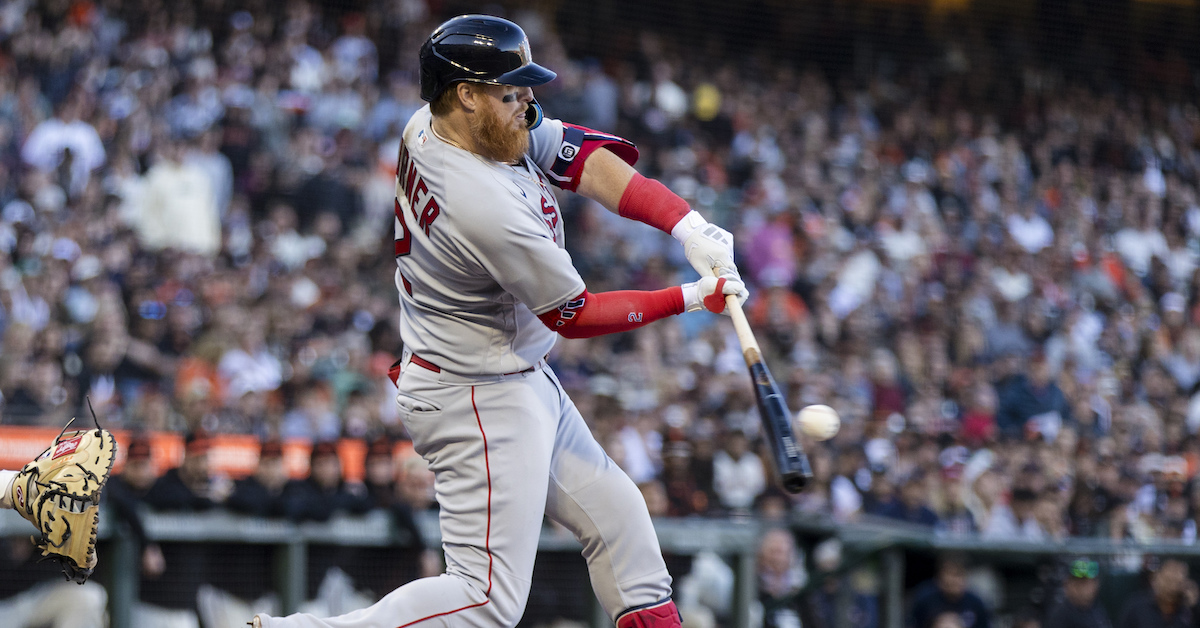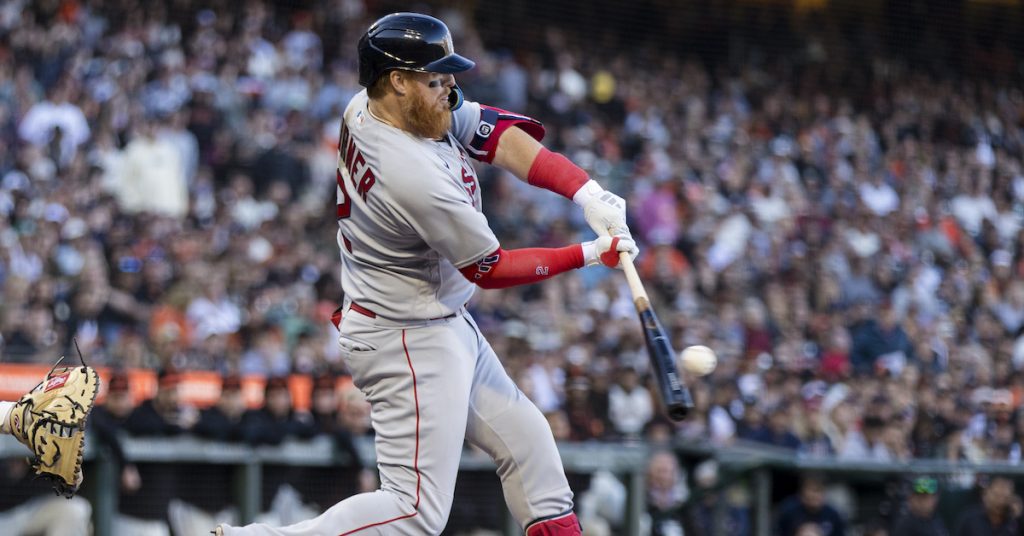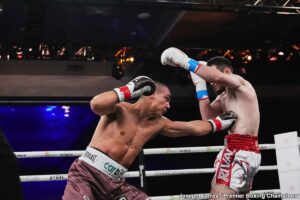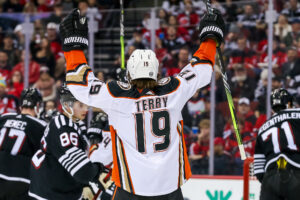
Justin Turner has faced a lot of fastballs over the years. Now in his 15th season, and his first with the Boston Red Sox, the 38-year-old infielder has logged 5,597 plate appearances, a good number of them against pitchers with elite heaters. Moreover, he’s had his fair share of success. One of the game’s most-respected hitters, he has a 128 wRC+ to go with a .289/.365/.467 slash line for his career.
Four years after interviewing him for one of the early installments of my Talks Hitting series, I caught up to Turner to focus on one specific aspect of his craft: the art of hitting a fastball.
———
David Laurila: How different is it to prepare for high-velocity fastballs when not all high-velocity fastballs are the same? Does that make sense?
Justin Turner: “It does. There are guys in the game that throw hard and put up big [velocity] numbers, but for whatever reason it doesn’t feel that hard when you’re in the box. There are also guys that don’t throw as hard. but in the box it feels like they’re throwing harder than what the number says. When you get a guy who throws hard and it feels hard, that’s a pretty good combination for their side of it.”
Laurila: Who are some of the pitchers who stand out in those respects?
Turner: “I don’t have a specific example in mind, but there are just some pitchers where you get in the box and… I mean, guys will talk about it. It’s like, ‘Man, that actually feels a little light, it doesn’t feel like 100 [mph].’ I don’t want to call anyone out, trash their fastballs or anything like that.”
Laurila: What about guys where it does feel hard?
Turner: “Spencer Strider is a guy that throws hard and it feels hard. Jacob deGrom throws hard and it feels hard. There are guys where the fastball comes out of their hand and it looks like an aspirin. The ball looks smaller because they’re throwing so hard.”
Laurila: What about pitchers who don’t have big velocity but the ball gets on you pretty quick?
Turner; “Kutter Crawford here [with the Red Sox] is 92–95 but he has 19–20 vert, so the fastball feels harder than what the gun is telling you. There are plenty of guys like that. They call it ride, spin rate, whatever. Zac Gallen is one of those guys. We faced a guy with the A’s who I think just got sent down. [Richard] Lovelady, I think his name is. He’s a lefty who throws 92, but he’s got extension and it kind of explodes out of his hand. Kenley Jansen, he’s 92–95, and his extension and the characteristics of his cutter make it play up. Chris Martin… I mean, he’s a guy that throws hard and it feels hard. He’s 97–98 with elite extension. It feels like he’s throwing 102.”
Laurila: What about the preparation aspect I mentioned at the onset?
Turner: “In order for us to prepare for a guy who is 95–97 with good extension, my thought, and my conversation to the guys, would be like, ‘Hey, treat it like 100. Get ready like you’re getting ready to hit 100, even though it’s 95–97, because it’s going to feel like it gets on you a little bit.’
“It’s a cue to prepare for a pitcher, just like anything else. For instance, if it’s a sinkerball guy, you say, ‘Hey, look for him up, like at your neck.’ If it starts waist high, you don’t want to swing at it because it’s going to be a ball. Treating 95 like 100 is the same mental cue as looking in an area, or making a pitch start in certain spot.
“With the guys where it feels lighter, I say this all the time, it’s like, ‘Hey, don’t feel like you have to cheat to the fastball. You can see it, make a decision, and put a good swing on it.’ When the gun says 100, everyone’s instinct is like, ‘Oh, I’ve gotta go, I’ve gotta get ready, I’ve gotta start my swing early to catch up to 100.’ But again, there are guys where it doesn’t feel like 100. To have that thought, for guys to understand that before they face the guy, I think is huge.”
Laurila: Giving advice to younger hitters is something you’re known for. You’re viewed as a mentor, almost as an extra hitting coach.
Turner: “I spend as much time in the cage watching other guys as I do working on myself in the cage. I want to know their swings. I want to know their thoughts. I want to know what they’re going through. I want to know what they’re feeling. At the same time, I want to offer up anything that I’ve gone through in the past that might be similar, some thoughts and ideas that I’ve used, to try to help them get a better feel when they’re scuffling a little bit. I would say that I invest way more time on everyone else’s swing than I do on my own.”
Laurila: Any final thoughts?
Turner: “I guess the biggest thing when talking hitting, and I’ve said this multiple times this year, is that what’s being overlooked a lot is timing — hitters being on time. Everyone wants to run the swing changes, gadgets and whatnot in the cage and make these adjustments. But I think guys often aren’t making sure that they’re on time before they go and change their swing.
“My point is that everyone’s swing works. If you’re on time, you have a chance for your swing to work. If you’re not on time, no matter how good your swing is, it’s not going to work. So if you’re not on time and you think your swing is broken, maybe it’s not your swing. Maybe you’re just not on time. So before you go overhaul your swing, you need to make sure you’re on time.”







